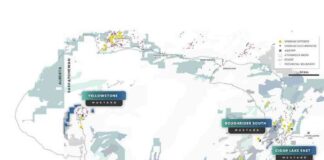Robotaxis Causing Noise Pollution in Residential Areas: Residents Fed Up with Constant Honking
The world’s only self-driving taxi company, Waymo, has recently faced backlash from residents in San Francisco, California, due to their autonomous cars causing noise pollution in residential areas. The fleet of self-driving taxis was installed with an update that made them beep their horns whenever another car reversed close to them, leading to constant honking throughout the day and night. This issue has disrupted the peace and quiet of the neighborhood, causing frustration among residents who are struggling to sleep and focus due to the incessant noise.
Residents Speak Out Against the Noise Pollution
Christopher Cherry, a resident living near the car park where the Waymo autonomous cars are stationed, expressed his disappointment in the situation. Initially excited about the prospect of having self-driving taxis in the neighborhood, Cherry’s excitement quickly turned to frustration as the cars began honking at each other continuously. He shared his experience with Sky’s US partner NBC Bay Area, highlighting the disruptive nature of the honking that persisted day and night.
According to Cherry, the honking escalated as more cars arrived at the car park, creating a cacophony of noise that made it difficult for residents to get a good night’s sleep. The robotic nature of the cars, honking at each other with no one inside, added to the absurdity of the situation, leaving residents feeling helpless and annoyed. The constant honking not only disrupted daily activities but also disturbed residents during early morning hours, affecting their overall quality of life.
Residents Take Action Against the Noise Disturbance
In response to the continuous honking, one resident, Sophia Tung, took matters into her own hands by live-streaming the car park on YouTube. Her videos captured the relentless honking of the autonomous taxis, garnering tens of thousands of views and shedding light on the severity of the noise pollution issue in the residential area. Tung’s videos served as a call for help, showcasing the disruptive impact of the honking on residents’ daily lives.
As the honking persisted at various levels throughout the day, with peak intensities reported at 4 am and during evening rush hour times, residents like Cherry found it increasingly challenging to cope with the noise pollution. The disruptive nature of the honking not only affected individuals during their workday but also disrupted their sleep patterns, leading to increased frustration and exhaustion among residents.
Community Response and Anticipation for Change
The situation at the car park became a focal point for residents and viewers alike, with hundreds eagerly awaiting updates on the honking issue. Viewers on Ms. Tung’s live stream created a Google spreadsheet to document significant moments in the car park, such as excessive honking or interesting parking maneuvers by the autonomous taxis. The community’s collective effort to track and address the noise pollution concern highlighted the shared desire for a resolution to the ongoing disruption.
Despite the challenges posed by the constant honking, residents remained hopeful for a positive change. The anticipation for a solution to the noise pollution issue grew as Waymo, the taxi firm responsible for the autonomous cars, acknowledged the problem and took steps to address it. With the support of the community and the commitment of the company to rectify the situation, residents looked forward to a quieter and more peaceful environment in their neighborhood.
Waymo’s Response and Resolution of the Honking Problem
The taxi firm, owned by Alphabet, Google’s parent company, took swift action to address the honking problem that had plagued the residential area. A spokesperson from Waymo explained that the honking feature was initially intended to prevent low-speed collisions by alerting other cars when they got too close while reversing. However, the unintended consequence of the constant honking in the parking lot prompted the company to reevaluate the software and make necessary adjustments.
Following the software update to reduce noise levels, the autonomous taxis left the car park at 4 am on a Wednesday, signaling a potential resolution to the honking issue. Residents and viewers monitoring the situation confirmed the absence of honking, indicating that the noise pollution problem had been successfully remedied. The collaborative efforts of the community and the proactive response from Waymo demonstrated a commitment to addressing residents’ concerns and maintaining a harmonious relationship with the neighborhood.
In Conclusion
The experience of residents in San Francisco, California, with the Waymo self-driving taxis sheds light on the challenges of integrating autonomous vehicles in residential areas. The unintended consequences of noise pollution caused by the constant honking of the taxis highlighted the importance of considering the impact of technology on communities. Through community engagement, advocacy, and proactive measures from companies like Waymo, residents can work together to address issues of noise pollution and create a more sustainable and peaceful living environment.






















